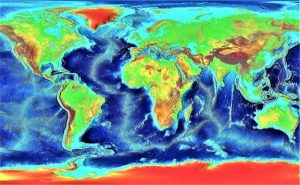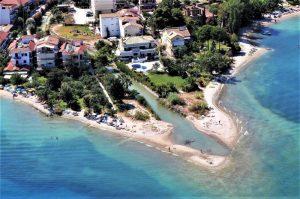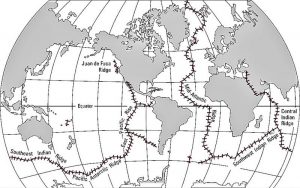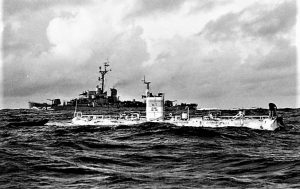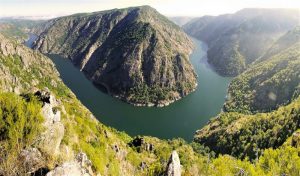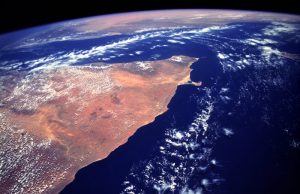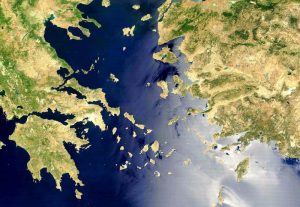Continental shelf
The continental shelf is a large underwater terrace which is relatively at low depth of the continental crust forming the edge of a continental land mass. The geology of the continental shelves is often similar to that of the adjacent exposed portion of the continent, and most of them have a slightly undulating topography known as crest and valleys. The continental shelves represent approximately eight percent of the entire area covered by the oceans. It can be found close to things and extends along coastlines.
What is the continental shelf?
The continental shelf is the part of the continents that lies beneath the ocean and close to the coastlines, close to things and which gives shape to the continental lands. It is then, the surface of the seabed that reaches 200 meters.
Characteristics of the continental shelf
The main characteristics of the continental shelf are the following:
- The size of the continental shelf may vary depending on the area in which it is located.
- It is economically important for fishing.
- Oil and natural gas can be found there.
- It has three zones depending on the penetration of light: euphoric or photosynthetic zone, dysphotic zone and aphotic
- The temperature and salinity of the platform changes the closer it is to the coast, due to the waves and tides.
- Continental shelves are generally covered with a layer of sand and mud.
- It covers the area between the coastal zone and the continental slope.
- They are usually seabed from the surface to 200 meters deep.
- Their surfaces show a certain type of relief, with small hills and ridges alternating with shallow depressions and terrain, very similar to valleys.
- Its width is very variable.
- Its waters are quite productive, and it has a great diversity of life and habitats.
Formation
For many millions of years, organic and inorganic materials formed the continental shelves. Inorganic material was accumulated as the rivers carried sediments, rock fragments, earth and gravel to the edges of the continents and to the ocean. These sediments gradually accumulated in layers and remained on the edges of the continents. Many continental shelves were dry lands at one time or another. About 18,000 years ago much of the Earth’s water froze into huge masses of ice called glaciers, and sea levels dropped, exposing the continental shelves. Biologists have also found the remains of terrestrial plants and animals on some platforms that are now under water.
Fauna
Fauna in the continental shelf is very rich due to the shallow depth and the presence of light. Polymorphic species can be found on the edge of the shelf and other organisms can only grow in the presence of others, living in shelters. We can find species such as cetaceans distributed throughout the platform, pinnipeds that reproduce in the coastal strip, fish, decapod crustaceans, gastropod mollusks, bivalve mollusks, cephalopod mollusks, echinoderms and more than 30 species of coastal birds and seabirds.
The basic food chain on the continental shelf begins with microscopic plants called phytoplankton that feed on sediment nutrients. Phytoplankton is the main food source for some animals living on the bottom as well as zooplankton. Zooplankton is a major dietary supplement for all marine life of other animals. Algae flourish in the rocky areas of the platforms, where they adhere securely, taking advantage of sunlight.
Flora
The flora found on the continental shelf is not very extensive, however, we can find, for example, phytoplankton and marine algae, which also play an important role in food chains.
Extension
The average width of continental shelves is approximately 65 km, but these measurements may vary depending on where they are located. For example, the shelf along the mountainous west coast of the United States is only about 32 km wide, while the eastern coastal strip is more than 120 km wide. Exceptionally wide continental platforms are found for example in northern Australia and Argentina. The world’s largest continental shelf stretches 1,500 km from the coast of Siberia to the Arctic Ocean.
Importance
Continental shelves are important because they have strong links with geology, evolution and even exobiology. They help us learn when life began on earth, how the world was formed, and what types of creatures live in the depths of the ocean. From a biological point of view, continental shelves are extremely important because they are much less deep than the rest of the ocean. This means that there is enough light penetrating the ocean floor for the primary production to originate.
This is important for many animals, including most of our main fishing species, as bottom habitats are generally safer than open ocean habitats due to the complexity of the environment. Any habitat that combines food availability with security will be crucial. Some results of this are that a large proportion of the fish we eat comes directly from continental shelves or spends at least part of its life cycle on continental shelves.
Continental shelf in Panama
The coasts located in Panama have a great fishing development, approximately ninety-five percent, which generates an important fishing activity in the waters. This activity is distributed in four main sectors: industrial, sports, craft and distant water.
Continental shelf in Mexico
This platform has an area of 431,050 square kilometers and extends 8,700 kilometers along the coast including islands and some provinces. One of the most important activities developed in it, besides fishing, is oil exploitation.
Continental shelf in Argentina
It consists of the bed and subsoil of underwater areas that go beyond its territorial sea until the limit defined by the presentation made by the country on April 21, 2009 before the Commission on the Limits of the Continental Shelf of the United Nations, which accepted it on March 11, 2016. Although part of the total area is recognized within the sovereignty zone suspended under the Antarctic Treaty or disputed with the United Kingdom, a quarter of the area is under undisputed Argentine sovereignty.
Continental shelf in Colombia
There are 135 different places that have been recognized as part of the national system of protected areas because it presents a great biodiversity, totally different habitats and ecosystems and naturalness, because the area has been preserved in a natural way.
How to cite this article?
Briceño V., Gabriela. (2019). Continental shelf. Recovered on 24 February, 2024, de Euston96: https://www.euston96.com/en/continental-shelf/
